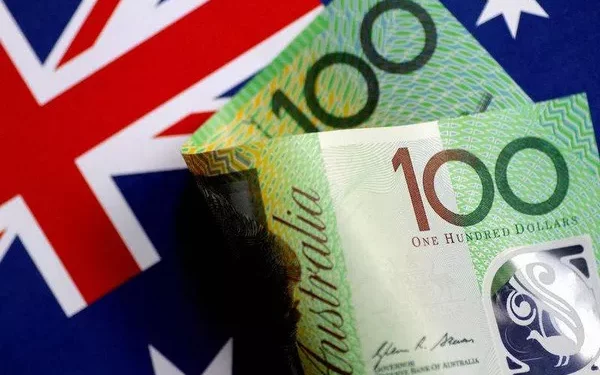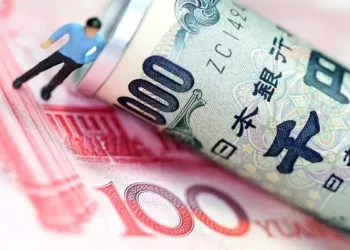Foreign exchange (forex or FX) trading is one of the most liquid and fast-paced markets in the world, where currencies from different countries are bought and sold. For people traveling internationally, investors, or businesses dealing with international transactions, understanding how much a particular currency is worth in another currency is crucial.
In this article, we will explore how much $300 AUD (Australian dollars) is in USD (U.S. dollars), discuss the key factors influencing exchange rates, and help you understand the intricacies of currency conversion. Whether you’re looking to travel, trade, or simply gain a deeper understanding of forex, this article provides clear insights.
Introduction to Currency Exchange
Currency exchange is the process of converting one nation’s currency into another country’s currency. This exchange is driven by the foreign exchange market, also known as the forex market, which operates 24 hours a day, five days a week. The value of a currency relative to another fluctuates based on various economic, political, and market factors.
For example, when you travel from Australia to the United States, you may need to convert your AUD to USD. Similarly, traders who participate in the forex market will need to understand the exchange rate between different currency pairs to make informed decisions.
In this case, we will focus on the conversion between Australian dollars (AUD) and U.S. dollars (USD).
What Does Currency Exchange Rate Mean?
The exchange rate is the price of one currency in terms of another currency. In the context of converting AUD to USD, the exchange rate indicates how much one Australian dollar is worth in U.S. dollars.
For instance, if the exchange rate between AUD and USD is 0.65, it means that 1 AUD is equivalent to 0.65 USD. Therefore, to convert $300 AUD to USD, you would multiply the amount of AUD by the exchange rate (300 * 0.65 = 195 USD).
However, exchange rates fluctuate due to market dynamics. This brings us to the importance of understanding factors that influence currency values.
How Exchange Rates Are Determined
The exchange rate between two currencies is influenced by multiple factors, including:
Economic Factors
One of the biggest determinants of currency value is the relative strength of the economy behind that currency. When a country’s economy is strong, its currency tends to increase in value compared to other currencies. Some key economic factors that affect exchange rates include:
Inflation: Generally, currencies of countries with lower inflation rates tend to appreciate relative to currencies of countries with higher inflation rates.
Interest Rates: Central banks, like the Reserve Bank of Australia (RBA) or the U.S. Federal Reserve, influence exchange rates through their monetary policies. When a country’s interest rates rise, its currency may appreciate as investors move money into that country to take advantage of higher returns.
Economic Growth: The overall health and growth rate of a country’s economy can impact currency strength. A growing economy usually leads to a stronger currency.
Political Factors
Political stability and government policies play a significant role in exchange rates. Investors tend to prefer currencies from countries with stable governments and transparent financial systems. On the other hand, political instability, such as government debt crises or civil unrest, can lead to currency depreciation.
For example, changes in leadership in a country, fiscal policies, or trade agreements can directly influence the supply and demand for a currency. Investors are always watching for geopolitical events that may affect the relative strength of the AUD or USD.
Market Speculation
The forex market is driven by speculation and investor sentiment. Currency traders analyze economic and political data, but much of the forex market’s activity is based on speculation. Investors buy or sell currencies based on their expectations about future events. If many traders believe that the AUD will appreciate against the USD, the demand for AUD will increase, leading to an increase in its value.
Trade Balances
A country’s trade balance, or the difference between exports and imports, affects the currency exchange rate. A nation with a trade surplus (exporting more than it imports) generally sees its currency appreciate because foreign buyers need to purchase the country’s currency to pay for goods. Conversely, a trade deficit can lead to currency depreciation.
For instance, Australia is a major exporter of commodities like iron ore and coal. When demand for these exports is high, it can lead to increased demand for AUD, potentially increasing its value.
Central Bank Interventions
Central banks play a key role in influencing currency values through their actions. The Reserve Bank of Australia (RBA) and the U.S. Federal Reserve (Fed) can influence exchange rates through monetary policy decisions, including adjusting interest rates or engaging in foreign exchange market interventions.
When central banks buy or sell large quantities of their currency in the market, they can impact the exchange rate. These interventions may be aimed at controlling inflation, stimulating economic growth, or stabilizing the currency.
Currency Pair: AUD/USD
In the forex market, currency pairs are quoted in terms of one currency relative to another. The AUD/USD pair represents the exchange rate between the Australian dollar and the U.S. dollar. The exchange rate shows how many U.S. dollars are needed to buy one Australian dollar.
For example, if the current exchange rate for AUD/USD is 0.65, it means that 1 AUD equals 0.65 USD. Conversely, if the exchange rate is 1.50, it means that 1 AUD equals 1.50 USD.
Since exchange rates are dynamic, the rate can change frequently. It’s important for traders, travelers, or anyone looking to convert currency to stay up to date with the current rates. Currency values can shift minute by minute due to factors like economic news, political events, and market sentiment.
Converting $300 AUD to USD
The process of converting $300 AUD to USD requires the current exchange rate between AUD and USD. To determine the exact value, you would simply multiply the amount of AUD by the exchange rate.
For example:
- If the exchange rate is 0.65, $300 AUD would equal 300 * 0.65 = $195 USD.
- If the exchange rate is 0.70, $300 AUD would equal 300 * 0.70 = $210 USD.
It’s essential to check the current exchange rate when making conversions, as rates fluctuate over time. Many financial platforms, currency converters, and banks provide real-time exchange rate data to help individuals and businesses convert currencies accurately.
Factors That Can Affect the Conversion of $300 AUD to USD
While the formula for converting AUD to USD is straightforward, it’s important to consider additional factors that might influence the amount you receive when converting currency.
Transaction Fees and Charges
Most financial institutions or currency exchange services charge a fee for converting currency. These fees can either be a flat rate or a percentage of the amount being exchanged. For example, if you convert $300 AUD to USD, you might incur a fee ranging from 1% to 5% of the total transaction amount.
Some currency exchange services may offer better rates than others, so it’s always worth comparing options. Always factor in the fees when determining how much USD you will receive after converting your AUD.
Spreads in Forex Trading
In the forex market, brokers often use “spreads,” which represent the difference between the buying price (ask price) and the selling price (bid price) of a currency pair. The spread can affect the amount of USD you receive in exchange for AUD, as brokers generally make money from this difference. The narrower the spread, the more favorable the exchange rate for traders.
Market Volatility
The forex market is influenced by numerous factors, including economic data, news, and geopolitical events. Volatility in the market can lead to fluctuations in exchange rates, meaning that the value of the AUD relative to the USD can change rapidly. A sudden announcement or event can cause the AUD to strengthen or weaken against the USD in a short period.
How to Monitor Exchange Rates and Convert Currency
If you are frequently involved in currency conversions, whether for personal or business reasons, staying informed about exchange rates is crucial. Here are some tips for tracking and managing currency conversions:
Use Currency Converters: Websites and apps like XE or OANDA provide real-time exchange rates and currency conversion tools.
Consult Financial Institutions: If you are exchanging a large amount of money, consider consulting your bank or a forex broker to understand the current rates and any fees associated with the conversion.
Stay Updated with Forex News: Follow forex news to understand the factors influencing the AUD/USD exchange rate. Economic reports, central bank meetings, and political developments can all impact currency values.
Conclusion
Understanding how much $300 AUD is in USD is more than just about knowing the number. It involves understanding the factors that drive exchange rates, including economic conditions, interest rates, political events, and market sentiment.
Currency exchange rates are never fixed and can change rapidly, so it’s important to stay informed, compare services, and factor in any potential fees or spreads when converting your money. Whether you’re a forex trader, a traveler, or someone with international business dealings, understanding how exchange rates work and how to track them can make a big difference in your financial decisions.
By staying informed and using reliable tools, you can ensure that your currency conversions are both accurate and cost-effective.
Related Topics:
























